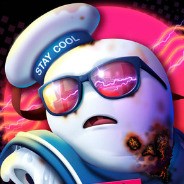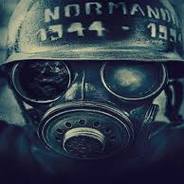Task 2. Read the text. Distinguish Fact from Opinion. Two of the statements below present facts, which can be proved. The other statement is an opinion, which expresses someone's thoughts or beliefs. Label the statements F for fact and O for opinion. 1. Ice carves are often sculptors of chefs. 2. An ice carving is more elegant than a snow sculpture. 3. At some ice carving contests, teams make massive sculptures from 25 blocks of ice. /Ice carving and snow sculpturing are sports as well as arts. The Great Lakes regior of the United States and Canada hosts contests in these sporegion is a perfect site for these events. It has long cold winters and ample snowfall. The sculptures are works of art.
Ice carving is an art. Ice sculptures range from massive monuments to small decorations. The artists who make them may be sculptors or chefs. But ice carving is also a sport. Contests may last for days. Teams of two or more people sculpt blocks of ice the size of large suitcases. At some contests, a team works on one block of ice. At other contests, a team may create a sculpture from 25 blocks of ice.
The art of snow sculpturing attracts sculptors who normally work with other materials. They enjoy working with snow because they can make massive forms in a short time. In contests, teams of three or four people sculpt one large snow block. The blocks may be the size of a small room. They may weigh 35 tons. These contests last for two to five days. Artists work day and night to finish on time. Once completed, the snow sculptures are displayed. The sculptures remain on view as long as the cold weather lasts.rts each winter. The
Ответы на вопрос:
ответ:Dr. Fleshner's research program is focused on understanding 1) the impact of acute and chronic stressor exposure (mental or physical) on behavior, neural, hormonal and immunological function; 2) how such systems interact to affect the whole organism; and 3) the mechanisms of increased stress resistance and stress resilience produced by exercise.
Stress Physiology Laboratory.
Education
1982-1984, B.S., Department of Psychology, Iowa State University.
1986-1988, M.A., Behavioral Neuroscience Program, Department of Psychology and Neuroscience, University of Colorado at Boulder.
1988-1990, Ph.D., Behavioral Neuroscience Program, Department of Psychology and Neuroscience, University of Colorado at Boulder.
Professional Experience
1990-1991, Postdoctoral Fellow, Department of Microbiology/Immunology & Psychiatry, University of Colorado Health Sciences Center, Denver, CO.
1991-1992, Postdoctoral Fellow, Department of Psychology and Neuroscience, University of Colorado at Boulder.
1991-1995, Instructor, Behavioral Neuroscience Program, Department of Psychology and Neuroscience, University of Colorado at Boulder.
1993-1996, Instructor, Department of Psychology and Neuroscience, University of Colorado at Denver.
1996-1997, Assistant Research Professor, Behavioral Neuroscience Program, Department of Psychology and Neuroscience, University of Colorado at Boulder.
1997-2003, Assistant Professor, Department of Kinesiology & Applied Physiology, University of Colorado, Boulder, CO.
2003-2004, Assistant Professor, Department of Integrative Physiology, University of Colorado, Boulder, CO.
2004-2009, Associate Professor, Department of Integrative Physiology, University of Colorado, Boulder, CO.
2009-Present, Professor, Department of Integrative Physiology, University of Colorado, Boulder,
Объяснение:
Популярно: Английский язык
-
в з 4) they used compute every day...
 Pomogiteπ19.07.2021 03:50
Pomogiteπ19.07.2021 03:50 -
ОЧЕНЬ НУЖНО ❗ Выберите правильный вариант перевода предложения из прямой речи...
 sodel2813.11.2021 03:06
sodel2813.11.2021 03:06 -
Complete the dialogue using the past simple of the verbs in brackets. A Where...
 маридиана23.11.2022 19:44
маридиана23.11.2022 19:44 -
Read the rubric.Do task.Use phrases from the Useful language box....
 1artemochek29.09.2020 10:39
1artemochek29.09.2020 10:39 -
написать 6 предложений по плану: 1. написать 1 предложение об авторе или жанре...
 Davidggg15.04.2020 05:57
Davidggg15.04.2020 05:57 -
Put the verbs in brackets into Future Simple (will), Present Continuous or be...
 аомппо02.08.2022 23:55
аомппо02.08.2022 23:55 -
1. Задание. Напишите правильную (абсолютную) форму местоимений: Образец...
 Бллллллл16.05.2022 06:29
Бллллллл16.05.2022 06:29 -
III.Вставьте нужное слово баллов даю! Example: You can see different kinds… animals...
 Dinadiamond13.07.2020 14:48
Dinadiamond13.07.2020 14:48 -
John... (read) an economic book, while Tom... (look through) some magasines...
 masha661015.12.2021 09:29
masha661015.12.2021 09:29 -
Перефразируйте каждое предложение, используя пассивную форму глагола. 1. Leonardo...
 alonsoqureaz21.04.2020 18:27
alonsoqureaz21.04.2020 18:27
